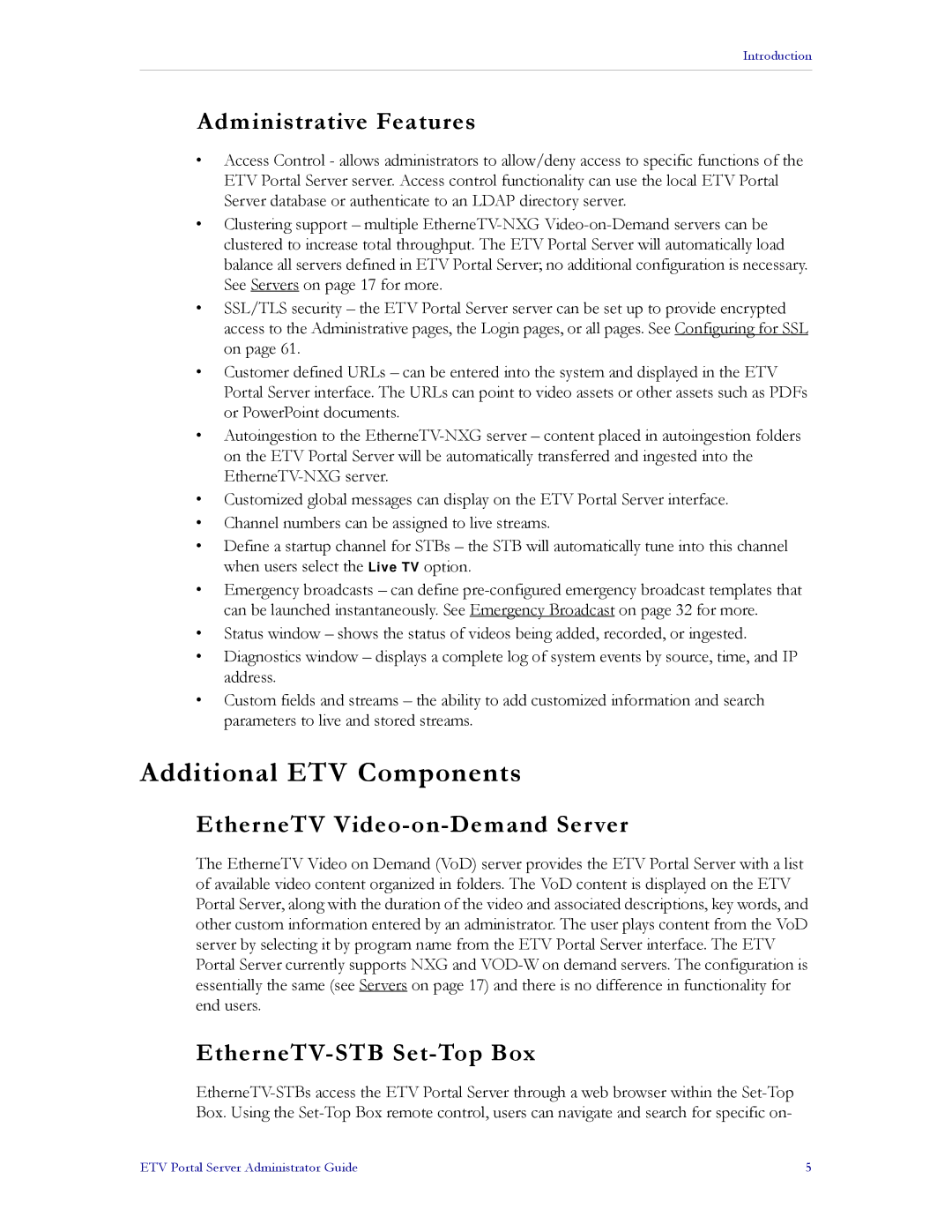Introduction
Administrative Features
•Access Control - allows administrators to allow/deny access to specific functions of the ETV Portal Server server. Access control functionality can use the local ETV Portal Server database or authenticate to an LDAP directory server.
•Clustering support – multiple
•SSL/TLS security – the ETV Portal Server server can be set up to provide encrypted access to the Administrative pages, the Login pages, or all pages. See Configuring for SSL on page 61.
•Customer defined URLs – can be entered into the system and displayed in the ETV Portal Server interface. The URLs can point to video assets or other assets such as PDFs or PowerPoint documents.
•Autoingestion to the
•Customized global messages can display on the ETV Portal Server interface.
•Channel numbers can be assigned to live streams.
•Define a startup channel for STBs – the STB will automatically tune into this channel when users select the Live TV option.
•Emergency broadcasts – can define
•Status window – shows the status of videos being added, recorded, or ingested.
•Diagnostics window – displays a complete log of system events by source, time, and IP address.
•Custom fields and streams – the ability to add customized information and search parameters to live and stored streams.
Additional ETV Components
EtherneTV Video-on-Demand Server
The EtherneTV Video on Demand (VoD) server provides the ETV Portal Server with a list of available video content organized in folders. The VoD content is displayed on the ETV Portal Server, along with the duration of the video and associated descriptions, key words, and other custom information entered by an administrator. The user plays content from the VoD server by selecting it by program name from the ETV Portal Server interface. The ETV Portal Server currently supports NXG and
EtherneTV-STB Set-Top Box
ETV Portal Server Administrator Guide | 5 |
